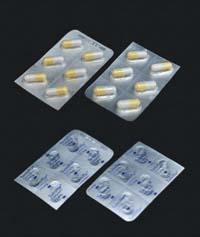Effects of counterfeiting drugs in the world
Farmazian doktorea. Biofarmazia, Farmakozinetika eta Farmazia-teknologiako irakasle kolaboratzailea
Farmazia Fakultatea UPV-EHU, Vitoria-Gasteiz

Counterfeiting drugs is a relatively new fact. The number of brand and generic drug counterfeits has increased considerably in recent decades and has spread to the whole world. According to the latest study by the World Health Organization (WHO), one in 10 drugs that are marketed worldwide is false.
The forgery of drugs is a business with great benefits, both for the high and continuous demand of citizenship drugs, and for the low cost of producing counterfeits.
Although the fake drug industry is more stable in countries with weak inspection systems in the pharmaceutical market, today's sophisticated resources are causing a strong penetration in the markets of developed countries. In fact, in developed countries, the majority of fake drug transactions are made through the Internet. Through the Internet, customers can easily access a treatment not authorized by their doctor. Or even with medical authorization, they can obtain it at a price much lower than that of the pharmacy office. However, it should be noted that drug transactions carried out on the Internet do not comply with the legally established requirements, putting people's health at risk.
The European Parliament has developed legislation to close web pages for the sale of drugs on the Internet. The new legislation requires that all web pages that market pharmaceutical products in the European Union have the same logo to facilitate the identification of pharmacies authorized by the user. In addition, to ensure the authenticity of medicines, safety devices should be incorporated into the containers.
Counterfeit drugs Counterfeit drugs
The counterfeit drug is a product marketed with the same identity as the legal drug and the name of the legal manufacturer.
At first glance, it is almost impossible to separate a counterfeit drug from the original, since in addition to having the same size, its structure is very similar.
The types of forgery that we can find are:
· Absence of active ingredients indicated in the container. Undoubtedly, it is the most frequent forgery. Almost half of the analyzed products present this type of forgery. Consequently, the drug does not have the therapeutic effects sought.
· Erroneous dosage of the active principle. For example, drugs dosed in quantities less than those indicated in the container. Cheaper and dosed drugs have also been found with lower potency drugs.
· There are also drugs that contain toxic substances. Among these substances we can find industrial paints, chalks and some types of waxes.
· They are also excipients without pharmacological effects in the substitution of impurities or drug. For example, drugs made with talc instead of with a drug are common in forgery.

· Handling of packaging and placement of fake prospects is also common. The aim of these improper manipulations is, in most cases, to increase the expiration date of previously prescribed medications.
The use of these drugs can be very dangerous and produce undesirable effects in the patient, including lack of control of the disease, overdose reactions and intoxications. All this, from the health point of view, can involve more expensive treatments, hospitalization and even the death of the patient.
Origin of false drugs
It is estimated that one-third of illegal drugs are forged in India and 10% in China. Sanitary controls also occur in less demanding countries such as Europe and North America, such as Africa, South America and other Asian countries.
In general, in clandestine laboratories that perform counterfeit drugs, they work in inadequate hygienic conditions and with limited means. However, the great benefits derived from the sale of fake drugs have allowed clandestine laboratories to progressively use more modern tools to improve the quality of copies.
According to WHO data, in the last two years the number of seizures of fake drugs on the borders of the European Union has multiplied by seven, with more than one million falsifications detected in 2010.
In the underdeveloped countries, because the pharmacy system is poorly regulated, fake drugs can be obtained not only in the street but also in the pharmacy offices. In these countries all types of drugs are falsified, such as antihypertensives, antibiotics, antiviral drugs, antimalariums, etc.
According to studies, every year more than 100,000 people die from these false treatments, the majority in developing countries. It is significant, for example, that half of the antimalarials taken in Africa are false, with the consequent danger to the patient.
In developed countries, through the Internet
In the last decade, among the ways of distributing counterfeits existing around the world, the Internet has been imposed on everyone else. Internet is the most appropriate place to meet with fake drugs, in most cases without the desire of the internet user. Therefore, cyberspace is an ideal environment to publicize new fake drugs and continue to increase commerce.
There are several reasons that can explain the success of the Internet drug trade:
· Ease. Finding and buying drugs on the network is very simple. In addition, to e-mail addresses arrive many spam messages sent by online pharmacies or individuals who sell these products.
· Comfort. The patient can buy them without leaving home. However, in Spain the influence of this factor is not relevant, since 99% of the population has access to some pharmacy where they reside. However, in the US, Australia and other countries, since access to a pharmacy requires a long way, comfort can have a great influence.

· Anonymity. Because many diseases still have a black name (AIDS, for example) or the shame of accepting certain diseases (such as erectile dysfunction), the patient does not dare to buy medication for the disease in the pharmacy office.
· Access to the drug without a prescription. Although most countries require a legal medical prescription to buy some medicine on the Internet, there are very few online pharmacies that comply with the law. Consequently, obtaining hypnotics, sedatives, antidepressants or non-prescription anabolizers is easy, with the consequent risk of abuse and dependence.
· Do not warn of the risks associated with the administration of fake drugs. The patient, without knowing that he is buying fake drugs, is not aware of the danger of false products. In addition, since most online pharmacies are foreign, the patient considers it legal to buy non-prescription drugs in these countries.
Actions against counterfeit drugs
We could say that counterfeiting drugs is an action without risk. On the one hand, legislation from one country to another is very different and this lack of convergence makes it more difficult to detect, denounce and close clandestine laboratories and distributors. In addition, the number of demonstrative controls of the legality of web pages is reduced and it is difficult to remove illegal pages from the network. In addition, the penalties imposed on offenders are excessively soft and it is not easy to detect false drugs in customs controls. Finally, information campaigns aimed at raising awareness to consumers about the situation and self-medication of fake drugs are not enough.
In addition, it should be noted that both prescription drugs and over-the-counter medications can produce harmful side reactions to health. This involves the production of drugs that guarantee quality, information, and pharmaceutical advice.
The war against fake drugs is the responsibility of all: governments, pharmaceutical laboratories, health professionals, police and even buyers.
National and international health authorities are increasingly concerned about the problem of fake drugs. Proof of this is that in recent years numerous international groups have been created to coordinate the fight against fraud of counterfeits and various actions have been carried out:
IMPACT Group
IMPACT (International Medical Products Anti-Counterfeiting Taskforce), International Special Group against Counterfeiting Medical Products, was formed in 2006 by WHO. IMPACT is in charge of coordinating measures globally to avoid the production, transport and trade of fake pharmaceutical products. This group is formed by the main bodies involved in the fight against counterfeiting.
European Union (EU) measures to avoid the introduction of fake drugs in the legal drug distribution chain
The hardening of the import requirements of active principles of other countries, the realization of audits to producers of active principles, and the tightening of the standards of such audits have been some of the proposals proposed by the EU.

With regard to the sale of pharmaceutical products on the Internet, in order for patients to identify them as authorized pharmacies, the websites of online pharmacies must have the same European logo (label) in the Member States in which they can operate and be connected to a central website of each Member State.
In addition, drug containers must carry a specific safety device. There are two marking systems available between security devices. These systems establish a unique code for each product. Subsequently, in order to check the authenticity of the container in the pharmacy distribution, these codes are recorded in a database:
a) Optical system Data Matrix: similar encrypted image system, reliable and economical to barcode. This system establishes a unique and own code for each container. This code contains the information of the batch number, the expiration date, and the serial number that identifies each container.
b) Radiofrequency identification system (RFID): This system carries radiofrequency labels placed on the product that transmit the product's identity through radio waves. It is the most attractive option for the future.
Counterfeit Drug Strategy 2008-2011
This strategy was published in April 2009 by the Ministry of Consumption and Health in collaboration with the Spanish Agency for Medicines and Health Products. This strategy, based on collaboration among all sectors, aims to protect the health of patients who can consume fake drugs.
Operation PANGEA II
Due to the increase in the number of websites supplying illegal drugs to patients, in November 2010 PANGEA II operation was launched in 24 countries. This operation worldwide has been coordinated by INTERPOL and the WHO IMPACT team and has been assisted by customs and police. The websites have mainly worked to control three fundamental elements in the trade of fake drugs: Providers of Internet services, payment systems and freight transport services.
In operation Pangea II, 751 websites have been found that after exploring the network carried out illegal actions, of which 72 have been closed. In addition, regulatory entities and customs have inspected more than 16,000 packages, of which 995 have been seized. Some 167,000 illegal tablets, mainly antibiotics, steroids and thinning tablets, have been destroyed in seized packages. At present, 22 people accused of crimes are being investigated. Among the most abundant crimes is the illegal sale of prescription drugs.






